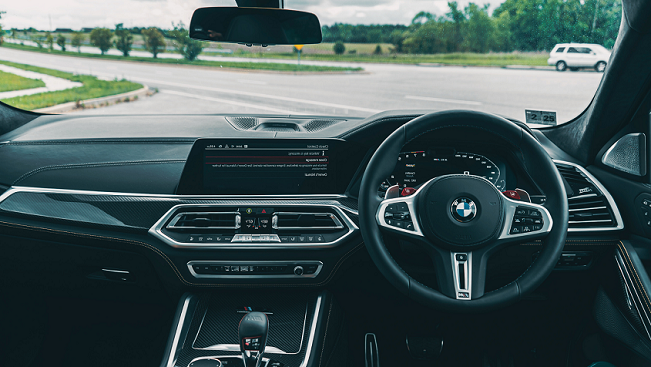In a time when technology is changing our lives, transportation is a key area of this change. One major improvement is the use of 5G technology in transportation systems. Smart transportation with 5G is changing how we travel, making it safer, more efficient, and easier. This article looks at how 5G affects smart transportation, its benefits, and what the future holds.
The Power of 5G Technology
5G technology improves Advanced Driver Assistance Systems (ADAS), which include features like cruise control, lane assist, and automatic braking. These systems use real-time data from 5G networks to react quickly to changing road conditions, helping to avoid accidents.
Enhanced Traffic Management
One big benefit of 5G in transportation is better traffic management. Traditional systems use fixed sensors and old technology, which can cause delays. With 5G, systems can use real-time data from connected cars, roadside sensors, and traffic cameras to manage traffic flow more effectively.
Real-Time Traffic Monitoring
5G allows traffic management centers to monitor traffic in real time, quickly spotting congestion, accidents, and other issues. This information helps adjust traffic signals, reroute vehicles, and give updates to drivers, which reduces traffic jams and improves travel times.
Dynamic Traffic Control
Dynamic traffic control systems powered by 5G can respond to changing traffic conditions in real time. For example, adaptive traffic signals can adjust their timing based on current traffic volumes to ensure vehicles move through intersections more smoothly. This reduces idling time at red lights, lowers fuel consumption and reduces emissions.
Connected Infrastructure
5G realizes the integration of vehicles and other vehicles, which is called vehicle-to-vehicle infrastructure (V2I). V2I ensures road safety in today’s crisis.”
Improved Road Safety
Safety is the most important thing in transportation. 5G can help you get through transportation.
Vehicle-to-Vehicle Communication
Vehicle-to-vehicle (V2V) communication allows vehicles to share information about their speed, position, and direction with each other. Vehicle-to-vehicle (V2V) communication lets cars share information about their speed, location, and direction. This helps cars avoid collisions by adjusting their speed or changing lanes, especially in poor visibility situations like at intersections or in bad weather.
Advanced Driver Assistance Systems (ADAS)
5G improves the functions of Advanced Driver Assistance Systems (ADAS), which include cruise control, lane assistance, and automatic braking.
Remote Vehicle Monitoring
5G also allows for remote monitoring of vehicles, helping managers keep track of vehicle health and performance. This way, problems can be spotted early, allowing for timely maintenance and preventing breakdowns.
Revolutionizing Public Transportation
Public communication systems will benefit greatly from the integration of 5G technology. By enhancing connectivity and switching, 5G can enable higher performance and higher availability of data and services.
Smart Buses and Trains
5G-enabled smart buses and trains can provide real-time information to passengers, such as arrival times, seat availability, and service disruptions. This improves the overall travel experience by allowing passengers to plan their journeys more effectively.
Predictive Maintenance
Just like private cars, 5G technology can facilitate predictive maintenance of public transportation fleets. By continuously monitoring the health of buses and trains, transportation operators can ensure a more reliable transportation system by resolving maintenance issues before they interrupt service.
Integrated Mobility Services
5G supports the development of integrated mobile services, allowing different modes of transportation to be seamlessly connected. For example, an app could provide real-time information about buses, trains, bike-sharing, and ride-hailing services, allowing passengers to plan and pay for their entire trip in one place. This improves convenience and encourages the use of public transport.
Future Trends and Innovations
5G communications systems have great potential, and their innovations may drive the industry to greater progress.
Autonomous Vehicles
Autonomous vehicles rely on real-time data to navigate safely and efficiently. 5G technology provides the necessary speed and reliability for autonomous vehicles to communicate with each other and with infrastructure, making self-driving cars a viable and safe option for the future.
Smart Cities
The integration of 5G technology in transportation is a key component of smart city initiatives. By creating interconnected transportation networks, 5G can help cities manage traffic, reduce pollution, and improve the overall quality of life for residents.
Mobility-as-a-Service (Maas)
5G technology enables MaaS by providing real-time data and data. Allows you to plan and book travel expenses in a variety of ways.
Conclusion
The integration of smart transportation systems with 5G is revolutionizing the way we travel, improving efficiency, safety, and convenience. By using 5G technology, transportation systems can become smarter and more responsive, reducing traffic jams, preventing accidents, and making travel better overall. As 5G continues to develop, its influence on transportation will grow, leading to a smarter and more connected future.


